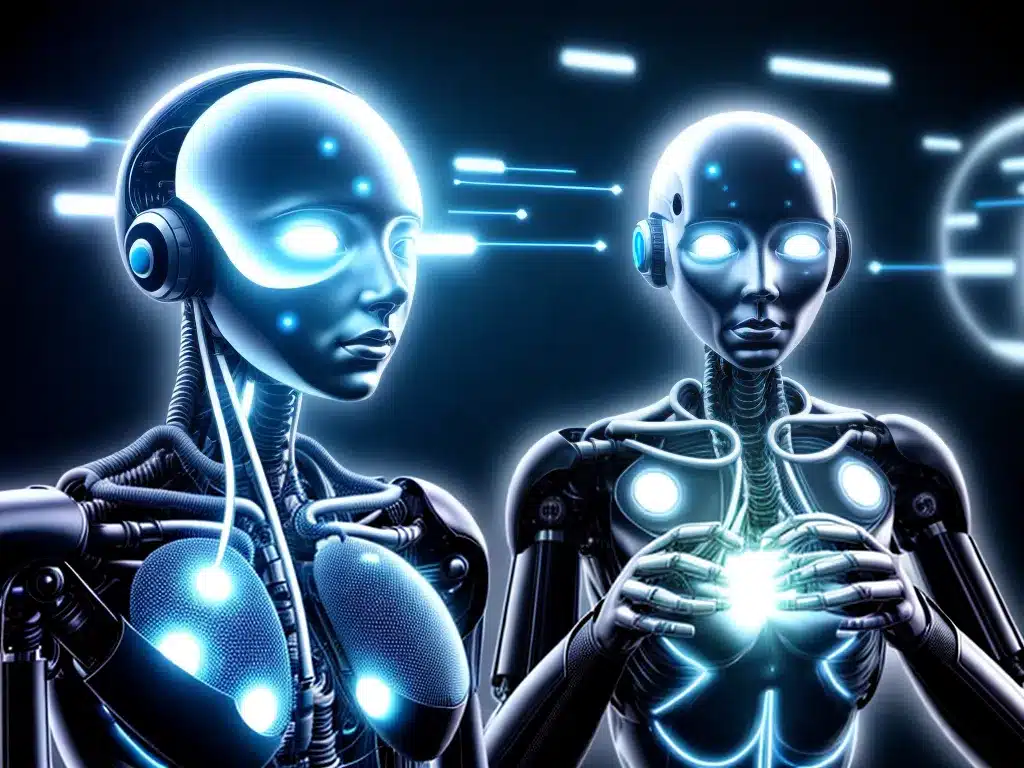

Artificial intelligence (AI) is transforming how computers operate and opening up new capabilities that were once thought to be solely in the realm of human intelligence. As AI algorithms become more sophisticated, they are able to perform tasks like visual perception, speech recognition, and language translation that push computers beyond their original programming.
The Evolution of AI
AI research began in the 1950s with a focus on games like chess. Early AI systems were limited to specific sets of rules and objectives. True intelligence requires learning, reasoning, and self-correction. Machine learning, a subset of AI, has enabled computers to learn from data and improve autonomously.
There have been several waves of innovation in AI:
-
First wave (1950s-1970s) – Focused on general problem solving and human intelligence simulation using symbolic approaches. Hit limitations due to computational power and difficulty modelling human reasoning.
-
Second wave (1980s-present) – Shift to statistical learning and probabilistic approaches to specific applications like speech recognition and computer vision. Saw commercial success but still lacked flexibility of human intelligence.
-
Third wave (2000s-present) – Rise of machine learning and deep neural networks fuelled by growth in big data and computing power. Enables more human-like intelligence for tasks like natural language processing.
We are now firmly in the third wave where AI is becoming deeply integrated in areas like automotive, healthcare, finance, and marketing. The rapid pace of progress suggests we are only scratching the surface of what is possible.
AI’s Impact on Computer Capabilities
AI has imbued computers with capabilities that enable technologies we interact with every day:
Natural Language Processing
-
Sentiment analysis – Understand emotional tone behind text for applications like social media monitoring and customer service chatbots.
-
Language translation – Convert text between languages in real-time enabling global communications. Google Translate now supports over 100 languages.
-
Speech recognition and synthesis – Transcribe speech to text and vice versa for tools like voice assistants (Alexa, Siri) and audio transcription software.
Computer Vision
-
Image classification – Identify and categorize objects in images. Enables smart image organization in apps like Google Photos.
-
Facial recognition – Detect human faces and uniquely identify individuals. Used for security in smartphones and surveillance.
-
Self-driving cars – AI techniques like deep learning enable cars to interpret visual data in real-time to operate autonomously.
Predictive Analytics
-
Recommendation systems – Platforms like Netflix and Spotify analyse your taste to recommend content you may like.
-
Fraud detection – Identify anomalous transactions and credit card fraud by analysing massive amounts of spending data.
-
Predictive maintenance – Analyse sensor data from industrial equipment to identify issues and optimize maintenance schedules.
Robotics
-
Warehouse robots – Companies like Amazon employ robots to locate and transport items in warehouses efficiently.
-
Prosthetics – Companies are developing robotic limbs that can interpret nerve signals from the human brain to restore mobility.
-
Healthcare robots – Robots can provide companionship to the elderly, assist doctors in surgery, and automate tasks like dispensing medication.
The Future of AI
AI adoption will continue growing as companies integrate it across operations. As algorithms become more complex, AI may reach new capabilities like:
- Advanced creativity for generating music, paintings, and stories
- Complex problem solving across disciplines
- Deep contextual understanding of multifaceted information
- General learning abilities beyond narrow tasks
But further advancements will require overcoming challenges like computational constraints, difficulties eliciting unlabeled data, and potential biases embedded in algorithms.
The rapid pace of AI innovation suggests we are only beginning to tap into its transformative potential. Mastering the synergy between human and machine intelligence will usher in a new era of technological capability. By automating routine cognitive tasks, AI can free up humans to focus on higher-level creative and analytical thinking.












